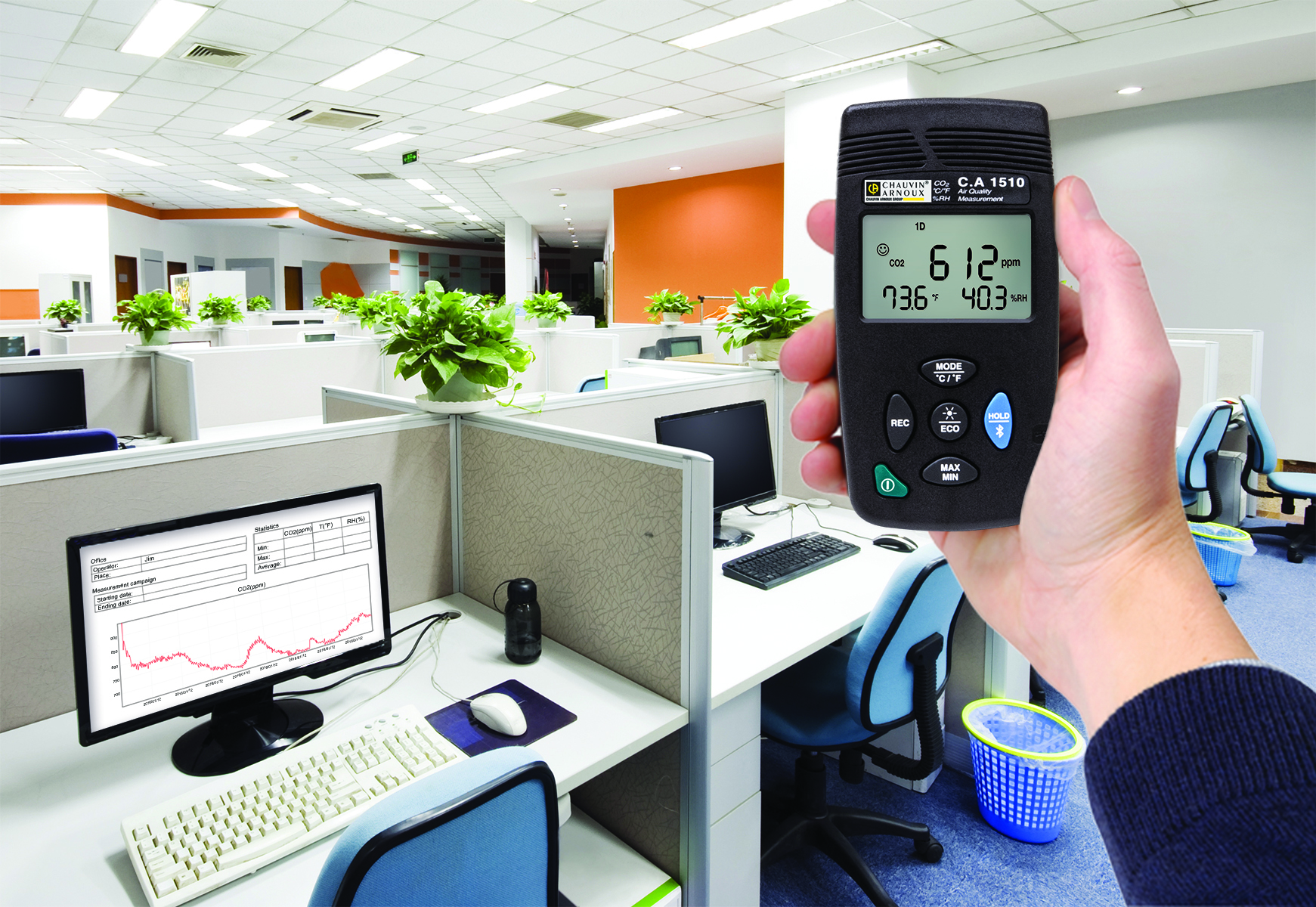NUMEROUS SCIENTIFIC STUDIES HAVE PROVEN that aerosols are a major means of transmitting viruses, such as COVID-19. We know today that active virus particles can float in the air longer and further than originally thought and pose a potential danger. This is especially problematic in indoor locations where people typically gather, such as in meeting rooms, conference centers, hotels and lunch- rooms to name a few.
Although there are still many questions about the transmission of viruses, aerosols are recognized as one of the transmission vectors.
Various scientific studies have now proven that a person infected with Covid-19 can emit numerous viral aerosols not only when sneezing and coughing, but also when speaking and even when exhaling. These aerosols can float in the air for minutes to hours. We tend to spend much more time indoors than outdoors and monitoring air quality becomes even more important than ever.
Coronavirus is airborne and transmitted through tiny droplets called aerosols that linger in the air much longer than the larger globs that come from coughing or sneezing especially in poorly ventilated indoor areas.
While larger droplets sink quickly at a small distance from the ground, aerosols can float in the air over larger distances of up to almost 16 feet and, possibly, float in the air and distribute the virus. This was confirmed by the researchers of the University of Florida. However, it is difficult to determine how large the proportion of virus contaminated aerosols can be.
The fact that even completely asymptomatically infected individuals can transmit the virus in this way is a concern that adds an additional layer of uncertainty about area contamination especially in enclosed environments.
A question that arises is compliance with whether the indoor distance rules are sufficient?
- Which measures are recommended?
- Which measuring devices are available to help identify and reduce the risk of infection?
Are the distance rules sufficient?
In enclosed spaces, the risk of infection is generally much higher than outdoors, where Covid-19 particles are dispersed by the wind.
Indoor CO2 concentrations have been shown to be an indicator of the risk of respiratory infectious disease transmission due to the fact, that a person infected with Covid-19 will exhale pathogen contaminated aerosols and CO2.
Generally speaking, the ambient concentration of CO2 in a room is basically stable and constant. Any excess levels of CO2 will most often come from human exhalation.
According to Anna Hartmann and Martin Krieger of the Hermann Rietschel Institute of the Technical University of Berlin, the studies have shown that CO2 is a good indicator of the functionality of the ventilation systems: “with a high air exchange, both low CO2 concentrations and low aerosol concentrations can be achieved. The lower the aerosol concentration, the lower the dose of aerosols that a person in the room inhales and therefore the risk of infection.”
With an understanding of this background information, the ability to monitor and document levels of CO2 therefore becomes a good practical choice for assessing the quality and effectiveness of the air circulation in indoor areas. Proper air circulation and ventilation also means that the concentrations of contaminated aerosols will also be reduced.
One practical and cost-effective choice for this task is AEMC Instrument’s Air Quality Logger, model 1510.
It is an optimal device for permanent monitoring of aerosol concentration in closed rooms through CO2, temperature and humidity measurement.
As already mentioned, an increased CO2 concentration in indoor spaces indicates a strong occupancy of the room and an insufficient supply of fresh air. For this reason, monitoring the CO2 concentration is an excellent indicator of air quality and a significant indication of the need for fresh air circulation.
The Model 1510 portable indoor air quality meter is easy and user-friendly to utilize and store the measured parameters. It determines the air quality in rooms based on the CO2 concentration alone or on the basis of the three measured physical quantities (CO2, relative humidity and temperature).

Important features to monitor air quality are the following:
- The model 1510 offers both audible and visual alerts of high CO2 concentration
- Simultaneous monitoring and recording of CO2, temperature and humidity values provides a full picture of room air quality
- The model 1510 is capable of storing up to 1 million readings which provides the ability to document in detail the air quality and effectiveness of the HVAC system, as well as potentially indicating the length of time that a room is occupied.
- Its compact size and mounting options make it easy to install for both permanent and temporary usage
- The model 1510 can operate with standard AA batteries or through a USB power adapter for continuous measurements
- The unit’s display of indoor air quality level based on CO2 content humidity and air temperature is easily visible
- Correct Ventilation with Model 1510 is detectable using the data logger function, it can be proven at any time, if necessary, whether potentially dangerous concentration values have or have not been exceeded during the entire measurement period. This provides a level of confidence that the premises have been properly ventilated.
- One important feature is the audible and visual warnings that effectively indicate and call to attention CO2 hazardous levels. Under normal safe conditions the display has blue backlighting.
- The device has two programmable limits for CO2 that will indicate warning levels and hazardous levels of CO2 displayed in parts per million (ppm). The backlight turns orange at the warning level and red at hazardous concentration levels along with an audible warning when high concentrations of CO2 are present.
The example below shows typical warning levels:
- At the warning CO2 concentration above 1000 ppm, the indicator light flashes orange
- At the hazardous level above 1700 ppm, the indicator light flashes red and an audible signal sounds
To conserve battery life and optimize the recorded data, occupancy times can be programed in the unit that will turn on monitoring at the start of the day and off at the end of the day when typically no people are in the area to be monitored.
Monitoring Carbon Dioxide concentration levels is a practical and cost-effective way of determining indoor air quality and is an indicator of the effectiveness of the HVAC system.




